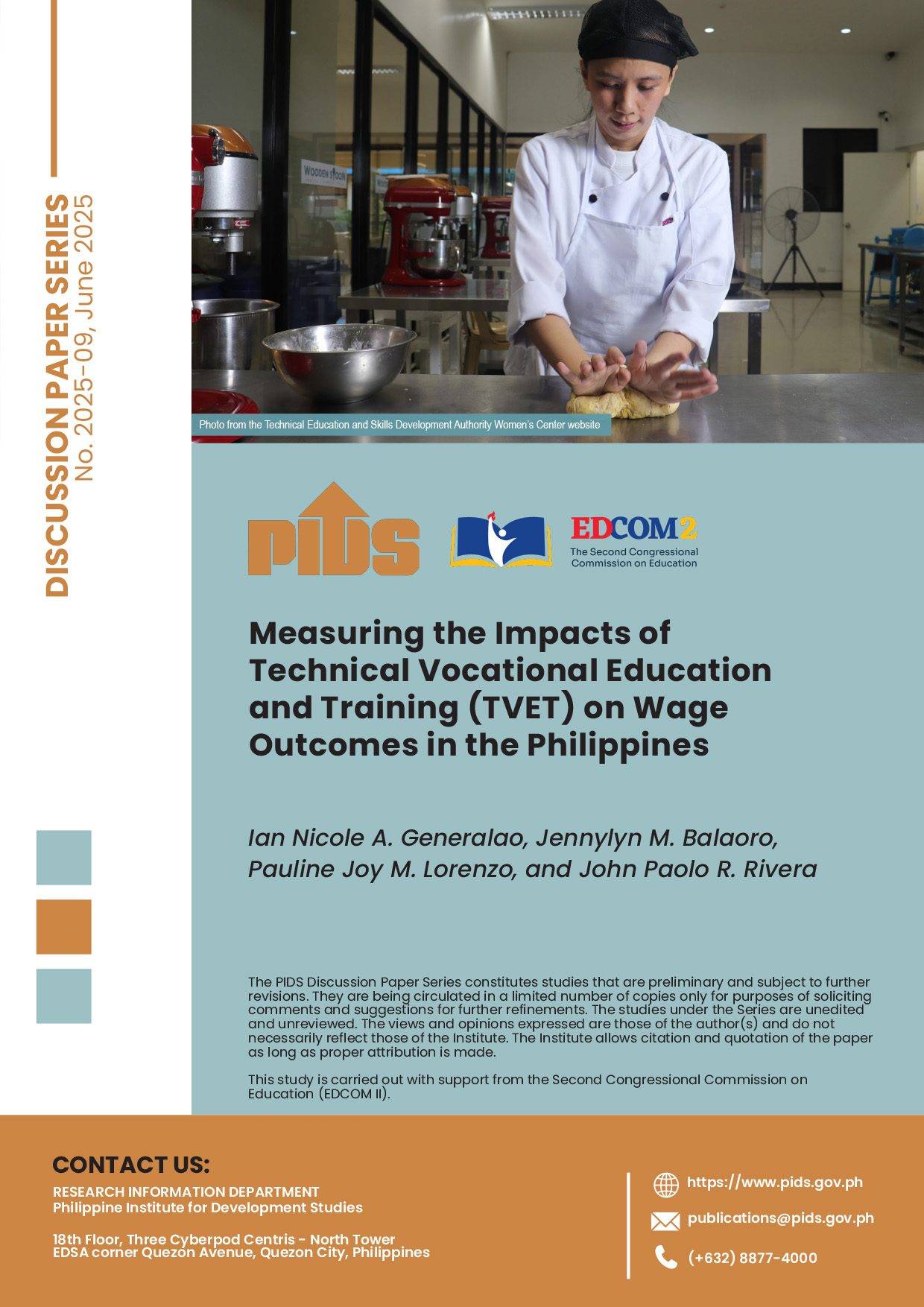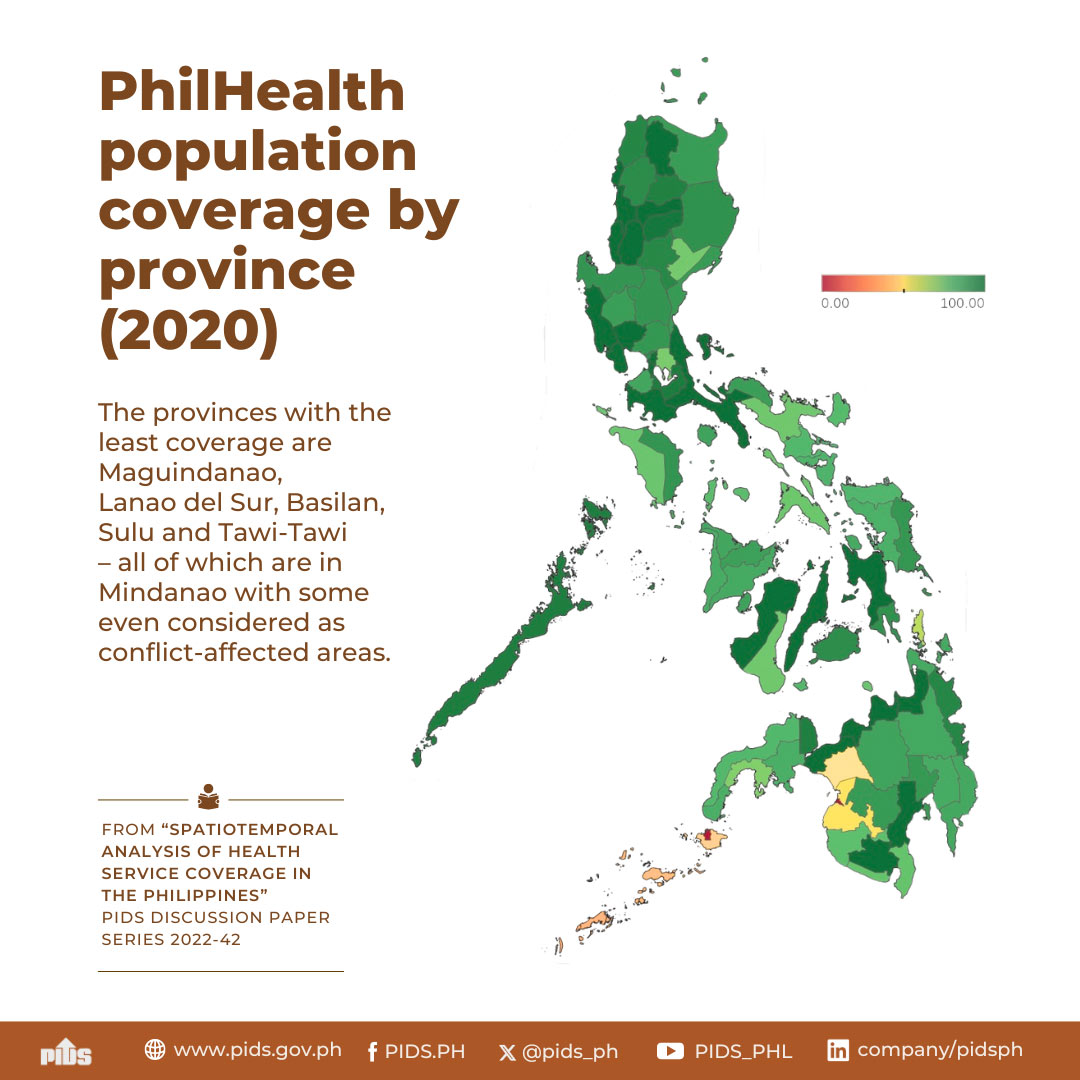COMMUNITY health workers in rural areas are paid less than P50 per day, according to the findings of a study released by the Philippine Institute for Development Studies (PIDS).
In a presentation in a webinar on Thursday, PIDS Research Fellow Connie Dacuycuy said the health workers, at least in Catarman, Leyte, received P500 to P1,250 per month. This would mean a daily wage of around P17 to P42 per month.
In Zamboanga del Norte, PIDS Research Fellow Michael R.M. Abrigo said his findings showed community volunteers—the health frontliners in communities—are paid anywhere from P350 to P1,200 per month. This translates to a daily wage of P12 to as much as P40 per day.
“They generally do not enjoy the same level of benefits, e.g., compensation security of tenure, despite working [volunteering] virtually full time,” Abrigo said. “[They handle] as [many] as 150 young children and 110 pregnant women.”
Dacuycuy agreed that these frontline workers are overworked, saying that ideally, the ratio of barangay health workers to the number of households should be 1 is to 20. This means there should be 1 barangay health worker for 20 households.
No job security
On top of the low salaries, Abrigo added these workers serve at the pleasure of the local executive. This, he said, has an important implication on the supply of trained/capacitated frontline workers.
The budget lack remains to be a challenge, especially in rural areas. Many local government units, particularly in remote areas, rely on the Internal Revenue Allotment (IRA), and this significantly limits their ability to hire more workers or increase their pay.
One of the possible areas of increasing LGU budgets is the Mandanas ruling, the Supreme Court decision upholding former Batangas Gov. Hermilando Mandanas’s contention that the IRA share of LGUs should be based on all government fees collected, and not just those from the main revenue drawers, the Bureau of Internal Revenue and Bureau of Customs. Abrigo said this is a good opportunity to give LGUs additional support in addressing health and nutrition issues.
However, increasing the budget will not necessary lead to the desired results. Abrigo said in the case of LGUs whose IRA increased by virtue of becoming cities from municipalities, health and nutrition were not the usual areas where the increase in funds are spent on.
Abrigo said usually, if the IRA of LGUs increase, the funds are devoted to education, general services and employment. And if there were any increases in the budget for nutrition, these are devoted to nutrition month expenses, particularly the nutrition month parade.
“The Mandanas ruling can be a good opportunity to expand resources,” Abrigo said. “But what is important is how the funds are spent.”
Training lack
IN the same forum, PIDS Research Fellow Aubrey Tabuga said apart from the low pay and uncertainty in the employment of these workers, they also lack training.
She said no standards are implemented for making measurements such as weight or height of children. These measurements are crucial in deterring malnutrition and stunting rates.
And, with only a few community health workers and the lack of communication in rural areas, many residents could not count on the availability of midwives, for example, to provide care for pregnant women, Tabuga also said.
She cited instances when a queue would form in health centers, only for people to find out that the midwife or health worker is not coming because of training or some other impediment.
Abrigo said LGUs must revisit the work assignments of midwives to even out the workload. The schedule of the visit of midwives to health centers must also be well-communicated.
In a presentation in a webinar on Thursday, PIDS Research Fellow Connie Dacuycuy said the health workers, at least in Catarman, Leyte, received P500 to P1,250 per month. This would mean a daily wage of around P17 to P42 per month.
In Zamboanga del Norte, PIDS Research Fellow Michael R.M. Abrigo said his findings showed community volunteers—the health frontliners in communities—are paid anywhere from P350 to P1,200 per month. This translates to a daily wage of P12 to as much as P40 per day.
“They generally do not enjoy the same level of benefits, e.g., compensation security of tenure, despite working [volunteering] virtually full time,” Abrigo said. “[They handle] as [many] as 150 young children and 110 pregnant women.”
Dacuycuy agreed that these frontline workers are overworked, saying that ideally, the ratio of barangay health workers to the number of households should be 1 is to 20. This means there should be 1 barangay health worker for 20 households.
No job security
On top of the low salaries, Abrigo added these workers serve at the pleasure of the local executive. This, he said, has an important implication on the supply of trained/capacitated frontline workers.
The budget lack remains to be a challenge, especially in rural areas. Many local government units, particularly in remote areas, rely on the Internal Revenue Allotment (IRA), and this significantly limits their ability to hire more workers or increase their pay.
One of the possible areas of increasing LGU budgets is the Mandanas ruling, the Supreme Court decision upholding former Batangas Gov. Hermilando Mandanas’s contention that the IRA share of LGUs should be based on all government fees collected, and not just those from the main revenue drawers, the Bureau of Internal Revenue and Bureau of Customs. Abrigo said this is a good opportunity to give LGUs additional support in addressing health and nutrition issues.
However, increasing the budget will not necessary lead to the desired results. Abrigo said in the case of LGUs whose IRA increased by virtue of becoming cities from municipalities, health and nutrition were not the usual areas where the increase in funds are spent on.
Abrigo said usually, if the IRA of LGUs increase, the funds are devoted to education, general services and employment. And if there were any increases in the budget for nutrition, these are devoted to nutrition month expenses, particularly the nutrition month parade.
“The Mandanas ruling can be a good opportunity to expand resources,” Abrigo said. “But what is important is how the funds are spent.”
Training lack
IN the same forum, PIDS Research Fellow Aubrey Tabuga said apart from the low pay and uncertainty in the employment of these workers, they also lack training.
She said no standards are implemented for making measurements such as weight or height of children. These measurements are crucial in deterring malnutrition and stunting rates.
And, with only a few community health workers and the lack of communication in rural areas, many residents could not count on the availability of midwives, for example, to provide care for pregnant women, Tabuga also said.
She cited instances when a queue would form in health centers, only for people to find out that the midwife or health worker is not coming because of training or some other impediment.
Abrigo said LGUs must revisit the work assignments of midwives to even out the workload. The schedule of the visit of midwives to health centers must also be well-communicated.












